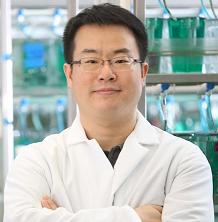 Liver transplantation is the only effective treatment for patients with end-stage liver diseases; however, the shortage of donor livers makes this therapy very limited. Comprehensive and detailed understanding of innate liver regeneration in diseased livers will provide significant insights into developing therapeutic strategies to promote liver regeneration in the patients. Our studies will delineate the molecular mechanisms underlying hepatocyte-to-cholangiocyte reprogramming-mediated biliary regeneration and suggest HDAC1/2 inhibitors as promising therapeutic drugs to promote the reprogramming-mediated regeneration in patients with cholestatic liver diseases.
Liver transplantation is the only effective treatment for patients with end-stage liver diseases; however, the shortage of donor livers makes this therapy very limited. Comprehensive and detailed understanding of innate liver regeneration in diseased livers will provide significant insights into developing therapeutic strategies to promote liver regeneration in the patients. Our studies will delineate the molecular mechanisms underlying hepatocyte-to-cholangiocyte reprogramming-mediated biliary regeneration and suggest HDAC1/2 inhibitors as promising therapeutic drugs to promote the reprogramming-mediated regeneration in patients with cholestatic liver diseases.
In support of these studies, McGowan Institute for Regenerative Medicine affiliated faculty member Donghun Shin, PhD, Associate Professor, Department of Developmental Biology, University of Pittsburgh School of Medicine, is the principal investigator on a National Institute of Diabetes and Digestive and Kidney Diseases R01 grant which will run for 4 years beginning April 1, 2022.
The abstract reads:
Biliary epithelial cells (BECs; also called as cholangiocytes) that line the hepatic biliary tree control bile composition and flow. Injury to the BECs leads to cholestasis, which can progress to fibrosis, cirrhosis, and liver failure. Cholestatic liver diseases are associated with high morbidity and mortality; however, few effective therapies are available. In fact, liver transplantation is the only life-extending treatment for end-stage cholestatic liver diseases, but the shortage of donor livers makes this therapy extremely limited. In the injured liver with biliary damage, hepatocytes (HCs) can contribute to BECs to recover from the loss of BECs. Recent studies in mice have shown that HC-derived BECs contribute to the intrahepatic bile ducts, thereby restoring appropriate bile flow. Patients with biliary obstruction or cholangiopathies also exhibit biliary marker expression in HCs, suggesting their reprogramming into BECs. Thus, augmenting innate HC-to-BEC reprogramming in cholestatic liver diseases is an attractive therapeutic alternative to ameliorate cholestasis and subsequent cirrhosis. To develop such a therapy, it is crucial to better understand the molecular mechanisms underlying HC-to-BEC reprogramming. Furthermore, identifying small molecules that can augment the reprogramming should provide promising therapeutic drugs for patients with cholestatic liver diseases. Our long-term goal is to completely delineate the molecular mechanisms underlying HC-to-BEC reprogramming. As a first step in pursuit of that goal, the objective of this proposal is to determine the cellular and molecular characteristics of HC-to-BEC reprogramming-driven biliary regeneration in our two innovative zebrafish models and to elucidate how histone deacetylase 1 (hdac1) regulates HC-to-BEC reprogramming. Based on our preliminary data obtained from pharmacological and genetic studies, we hypothesize that Hdac1 inhibition promotes HC-to-BEC reprogramming by derepressing the Notch receptor gene notch2 and the signal transducer and activator of transcription 3 gene (stat3). We will test this hypothesis and accomplish the objective of this application by (1) elucidating the entire process of HC-to-BEC reprogramming-driven biliary regeneration in the two zebrafish models, in which complete absence of BECs is achieved and subsequently HCs convert to BECs, (2) determining the effects of Hdac1 inhibition on HC-to-BEC reprogramming in both zebrafish and mice, and (3) elucidating the molecular mechanisms by which Hdac1 inhibition promotes the reprogramming. The successful accomplishment of the proposed research will not only provide novel molecular mechanisms underlying HC-to-BEC reprogramming but also suggest HDAC1/2 inhibitors as promising therapeutic drugs to promote the reprogramming in patients with cholestatic liver diseases.
Read more…
NIH Reporter: Delineating the molecular mechanisms of hepatocyte-to-cholangiocyte reprogramming
